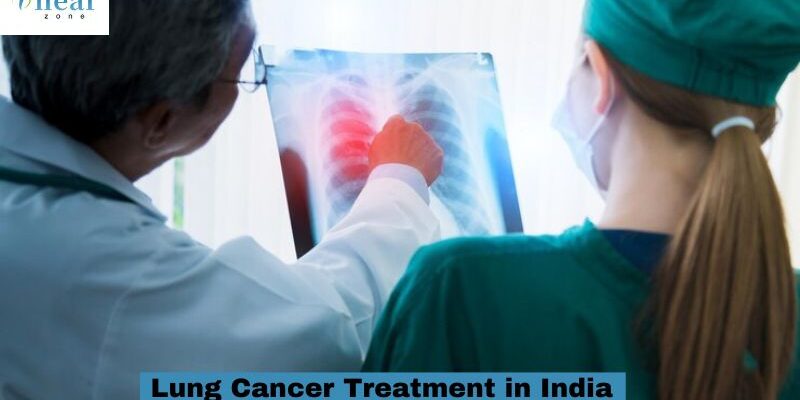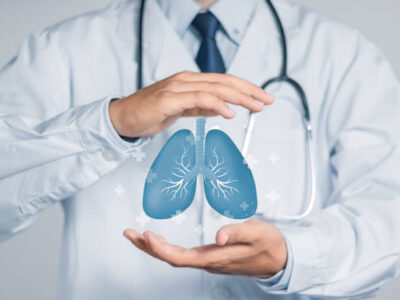
Introduction to Lung Cancer
Welcome to a journey of understanding the complexities of lung cancer – a disease that impacts millions of lives worldwide. In this blog post, we will delve into the differences between Non-Small Cell Lung Cancer (NSCLC) and Small Cell Lung Cancer (SCLC), shedding light on their distinct characteristics, symptoms, diagnosis, and treatment options. So grab your seat as we explore the nuances of these two types of lung cancer and empower ourselves with knowledge to make informed decisions about our health.
What is Non-Small Cell Lung Cancer (NSCLC)?
Lung cancer is a serious and complex disease that affects millions of people worldwide. Non-Small Cell Lung Cancer (NSCLC) is one of the most common types, accounting for about 85% of all lung cancer cases.
Unlike Small Cell Lung Cancer (SCLC), NSCLC tends to grow and spread at a slower pace. There are different subtypes of NSCLC, including adenocarcinoma, squamous cell carcinoma, and large cell carcinoma.
Symptoms of NSCLC can vary but may include persistent coughing, chest pain, shortness of breath, and unexplained weight loss. Diagnosis typically involves imaging tests like CT scans and biopsies to confirm the presence of cancer cells.
Treatment options for NSCLC depend on various factors such as the stage of the cancer, overall health status, and personal preferences. Options may include surgery, chemotherapy, radiation therapy or targeted drug therapy tailored to specific genetic mutations in the tumor cells.
Types of NSCLC
Non-Small Cell Lung Cancer (NSCLC) is the most common type of lung cancer, accounting for about 85% of all cases. There are three main types of NSCLC: adenocarcinoma, squamous cell carcinoma, and large cell carcinoma.
Adenocarcinoma typically starts in the cells that line the airways and is more common in non-smokers or former smokers. Squamous cell carcinoma usually develops in the lining of the bronchial tubes and is often linked to smoking. Large cell carcinoma is less common and tends to grow and spread quickly.
Each type of NSCLC may require a different treatment approach based on its characteristics and stage. It’s crucial for healthcare providers to accurately diagnose the specific type of NSCLC to determine the most effective treatment plan for each individual patient.
Symptoms and Diagnosis of NSCLC
When it comes to Non-Small Cell Lung Cancer (NSCLC), being aware of the symptoms and getting an early diagnosis is crucial for effective treatment.
Symptoms of NSCLC can vary from person to person but may include a persistent cough, chest pain, wheezing, shortness of breath, coughing up blood, fatigue, unexplained weight loss, and recurring respiratory infections.
If you experience any of these symptoms persistently or have risk factors such as smoking history or exposure to carcinogens, it’s important to consult a healthcare professional.
Diagnosing NSCLC usually involves imaging tests like CT scans or MRIs, biopsies to confirm cancerous cells in the lungs, and possibly genetic testing to determine specific mutations that can guide treatment options.
Early detection through recognizing symptoms and seeking timely medical evaluation is key in managing NSCLC effectively.
Treatment Options for NSCLC
When it comes to Non-Small Cell Lung Cancer treatment(NSCLC), there are several options available depending on the stage and specific characteristics of the cancer. Surgery is often recommended for early-stage NSCLC, where the tumor can be removed entirely.
For more advanced cases, treatments like chemotherapy, targeted therapy, immunotherapy, and radiation therapy may be used either alone or in combination. Chemotherapy involves using drugs to kill cancer cells throughout the body.
Targeted therapy focuses on specific genetic mutations in the cancer cells that allow them to grow and divide. Immunotherapy helps boost the body’s immune system to fight off cancer cells effectively. Radiation therapy uses high-energy rays to target and destroy cancer cells.
It is crucial for patients with NSCLC to work closely with their healthcare team to determine the most effective treatment plan tailored to their individual needs.
What is Small Cell Lung Cancer (SCLC)?
Small Cell Lung Cancer (SCLC) is a less common but highly aggressive type of lung cancer. Unlike Non-Small Cell Lung Cancer, SCLC tends to grow and spread rapidly, making it challenging to treat. This type of cancer typically starts in the bronchi, which are the large airways in the lungs.
SCLC is often associated with a history of smoking or exposure to secondhand smoke. It is characterized by cells that are small and round under a microscope, hence the name “small cell.” These cells can quickly divide and form large tumors within the lungs.
Due to its aggressive nature, Small Cell Lung Cancer is more likely to metastasize early on compared to Non-Small Cell Lung Cancer. This means that it can spread to other organs such as the liver, brain, or bones at an advanced stage.
Treatment options for SCLC usually involve a combination of chemotherapy, radiation therapy, and sometimes immunotherapy. Surgery may not be a viable option for most patients due to the tendency of this cancer type to have already spread beyond surgical reach when diagnosed.
Types of SCLC
Small Cell Lung Cancer (SCLC) is less common than Non-Small Cell Lung Cancer, but it tends to grow and spread more quickly. There are two main types of SCLC: small cell carcinoma (oat cell cancer) and combined small cell carcinoma. Small cell carcinoma accounts for about 95% of all cases of SCLC.
Combined small cell carcinoma is a mix of both small cell and non-small cell components in the tumor. This type requires a different treatment approach compared to pure oat cell cancer. Identifying the specific type of SCLC is crucial for determining the most effective treatment plan.
Both types of SCLC have similar symptoms, which can include persistent cough, chest pain, shortness of breath, fatigue, and unexplained weight loss. Early detection through screening tests can help with timely diagnosis and subsequent treatment planning.
Treatment options for SCLC typically involve a combination of chemotherapy, radiation therapy, and sometimes surgery depending on the stage and extent of the cancer. It’s essential to consult with a healthcare provider specializing in lung cancer to discuss personalized treatment options tailored to individual needs.
Symptoms and Diagnosis of SCLC
Small Cell Lung Cancer (SCLC) often presents with symptoms that may initially seem like common respiratory issues. These can include a persistent cough, chest pain, shortness of breath, and wheezing. Additionally, sudden weight loss without diet or exercise changes, coughing up blood, and recurrent lung infections could be indicators of SCLC.
Diagnosing SCLC typically involves a series of tests such as imaging scans like X-rays or CT scans to visualize the lungs and detect any abnormalities. A biopsy is usually conducted to confirm the presence of cancer cells in the lung tissue sample. Blood tests may also be done to check for tumor markers specific to SCLC.
Early detection plays a crucial role in determining treatment options and improving outcomes for patients with Small Cell Lung Cancer. If you experience any concerning symptoms or have risk factors for lung cancer, it’s essential to consult a healthcare professional promptly for evaluation and appropriate management strategies.
Treatment Options for SCLC
Navigating the different types of lung cancer, whether non-small cell or small cell, can be overwhelming. However, understanding their distinctions and treatment options is crucial in the fight against this disease.
For Small Cell Lung Cancer (SCLC), treatment typically involves a combination of chemotherapy, radiation therapy, and sometimes surgery for early-stage cases. Immunotherapy and targeted therapy may also be considered depending on individual cases. Clinical trials are continually exploring new approaches to treating SCLC more effectively.
Remember that early detection and prompt medical intervention significantly increase the chances of successful treatment outcomes for both NSCLC and SCLC. If you or a loved one are facing a lung cancer diagnosis, seek guidance from healthcare professionals at leading multispecialty hospitals like Healzone in India known for their expertise in lung cancer treatment.
Stay informed about advancements in medical care and consider medical tourism options when seeking top-notch treatments. Your health is invaluable – trust it to experienced hands dedicated to providing comprehensive care tailored to your needs.
Read More Article – https://emperiortech.com/











